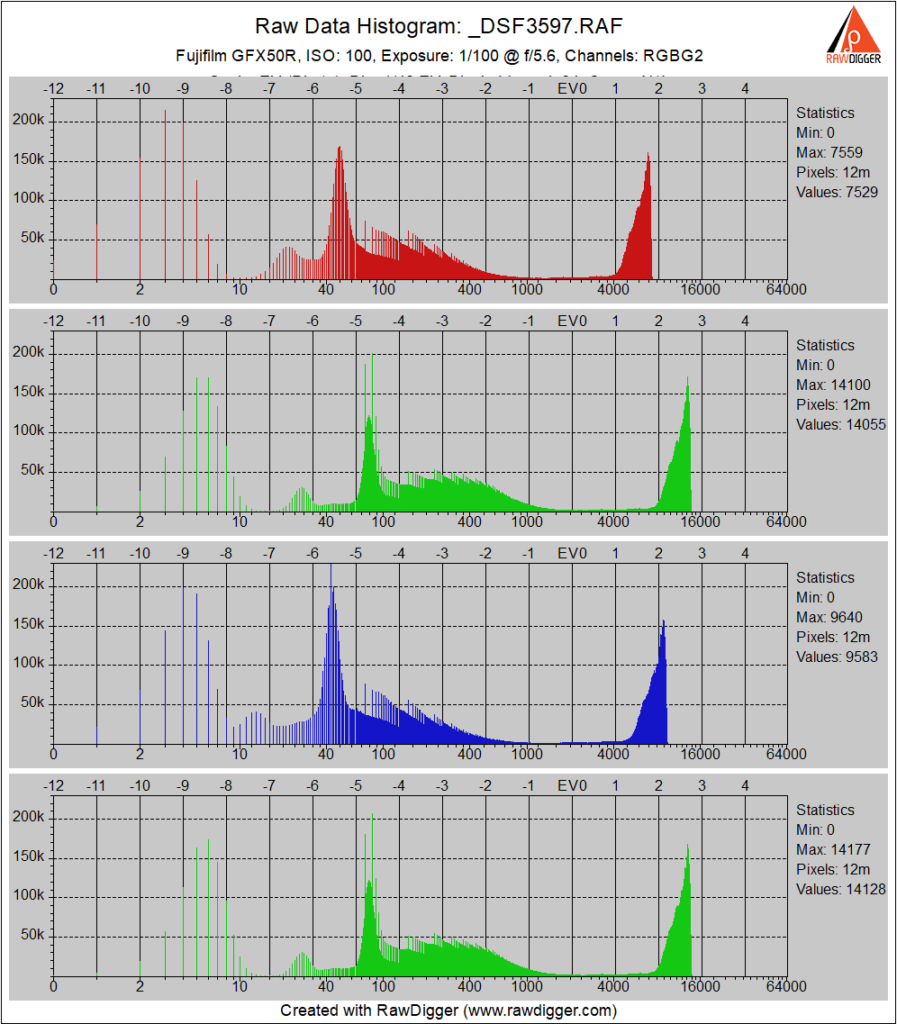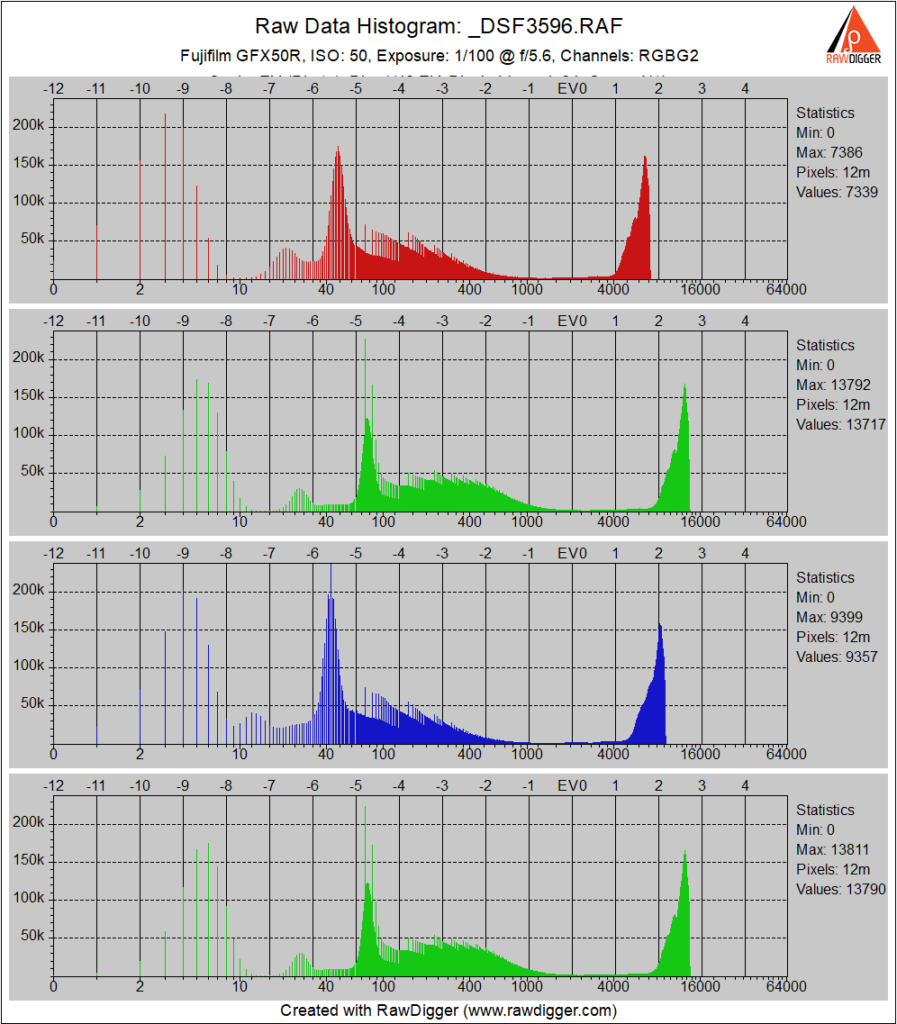This is one in a series of posts on the Fujifilm GFX 50S and 50R. You should be able to find all the posts about that camera in the Category List on the right sidebar, below the Articles widget. There’s a drop-down menu there that you can use to get to all the posts in this series; just look for “GFX 50S”.
I had an interesting email exchange this morning with someone who reviews cameras for a living. He’d mentioned routinely making his GFX 50x captures at ISO 50 so that he could maximize the dynamic range. I told him that wouldn’t help because ISO 50 on the GFX 50x is what I’ve been calling a “fake ISO”; it doesn’t allow the accumulation of more electrons in the well, but merely does the same thing as what you’d do when you set the ISO to 100 and set the Exposure Compensation to + 1 EV.
I’ve talked extensively about fake ISOs on this blog. You can search for the term, or you can read a detailed explanation here. However, I’d never tested the GFX 50x cameras at ISO 50; I’d just looked at Bill Claff’s data and saw that they worked like the other cameras with which I was familiar, and moved on. But here was a person of some repute who said otherwise, so it would behoove me to verify Bill’s results.
I took a GFX 50R, attached a 45 mm f/2.8 Fuji lens, put it on the slick new Arca Swiss cube with geared panning, and aimed it at a scene with the shutter speed manually set to 1/100 second and the f-stop manually set at f/5.6. I fired off two shots, one at ISO 100 and one at what Fuji calls 50L — nice touch, that L, which should be a clue that not all is as it seems.
Here’s a full-frame histogram of the raw file from the ISO 100 shot:
And here’s the histo of the ISO 50 shot:
They are essentially identical, proving that the camera is not less sensitive in ISO 50 mode than at ISO 100. Of course, the JPEG preview image in the ISO 50 shot is darker than the one in the ISO 100 shot, but the raw values are the same.
So, no, Virginia, there is no way to gather more photons at ISO 50 than at ISO 100 with the GFX 50R. Presumably the GFX 50S works the same way. Bill’s tests indicate that it does.


I’ve long been mystified why Arca-Swiss didn’t have geared panning on their Cube and D4 heads. It seems like the easiest rotation axis to put gears on. I’m glad to see they are finally getting around to it.
And they got to bump the price by half a kilobuck.
Hi Jim,
yes, the 50S works the same way of course. So do all Fujifilm X series cameras in Extended ISO L mode.
This is quite weird in X cameras that offer more than one ISO L setting. For example, an X-T2 with base ISO 200 also offers ISO L 160, ISO L 125 and ISO L 100. One would expect that ISO L 160 has the same DR as ISO 200. However, ISO L 160 is derived from ISO 320. And it’s the same with ISO L 125, which is in fact derived from ISO 250.
So, by switching from ISO 200 to ISO L 160 in manual mode M (and not changing aperture or shutter speed), you are actually losing 2/3 EV of dynamic range. And ISO L 125 still takes away 1/3 EV of DR. ISO L 100 then of course has the same DR as ISO 200.
A remarkable problem with extended ISO L in Fuji cameras is that the live view doesn’t represent the actual DR of the fake extended ISO setting. Instead, it will behave like an actual lower ISO setting, so the live view and live histogram aren’t displaying correct image previews. Everything looks fine in the EVF and in the histogram, but the result (RAW and JPEG) is overexposed by 1 EV (high risk of blown highlights).
Of course, this can be circumvented by manually setting the exposure with the camera’s actual base ISO and then switching to ISO L. This will darken the viewfinder by 1 EV, which can be nice and useful in low-contrast scenarios where you are aiming for a classic ETTR exposure with highlights at the sensor saturation point. In these situations, it often also helps getting auto white-balance.
A related topic is how the Sigma fp will do in-camera stacking for its rather extreme extended-low-ISO capabilities, and how this will affect the shortest exposure time what with the electronic-only shutter.
Not relevant to this topic ,but i have seen some tests shot on GFX between a GF and a Canon lens adapted to the Fuji .Same settings ,same focal lengths in a controlled studio scene.The results showed that the GF lens underxposed the image.It would be interested if you could do something similar .
Sorry, there are no Canon lenses available to me.